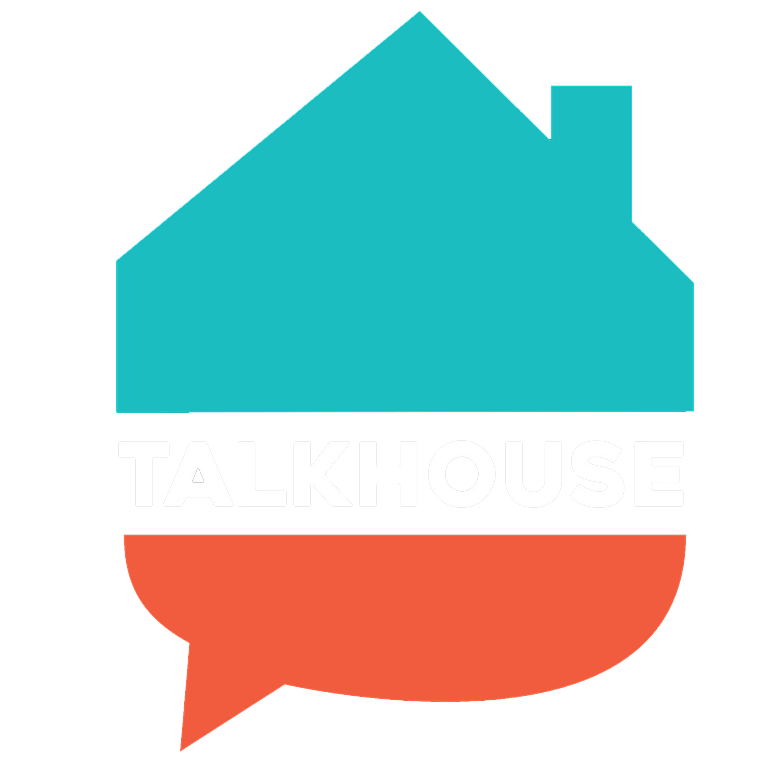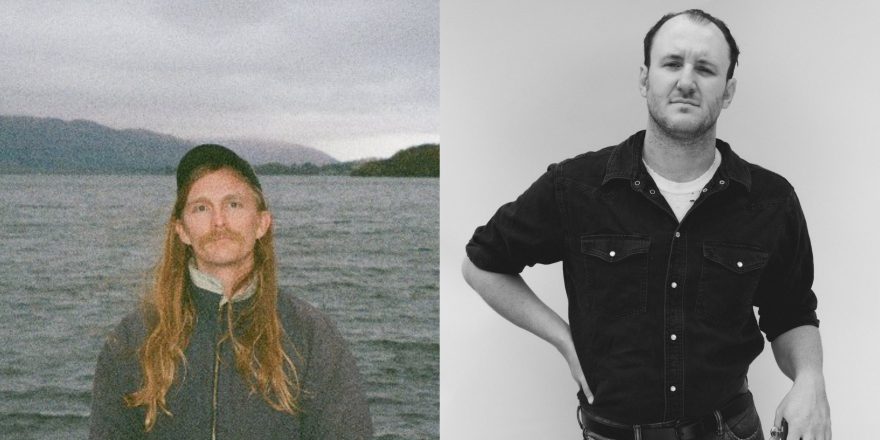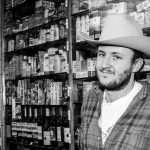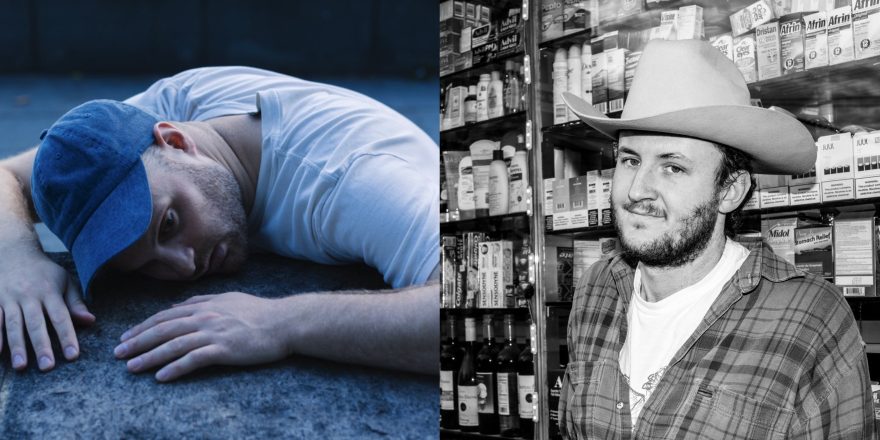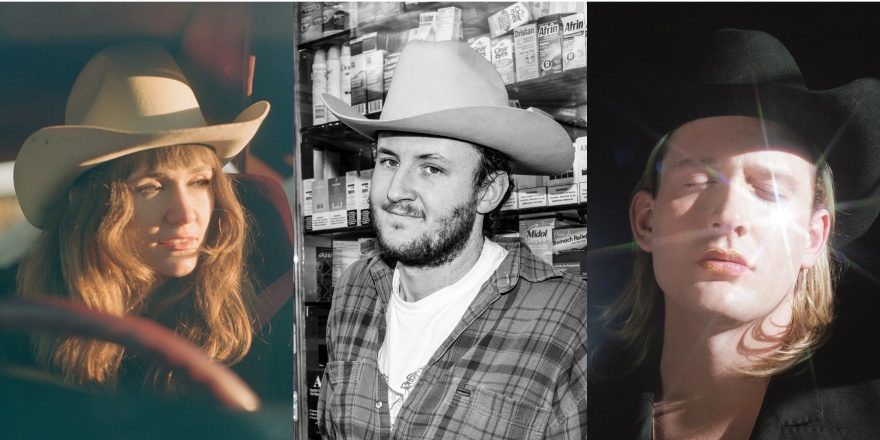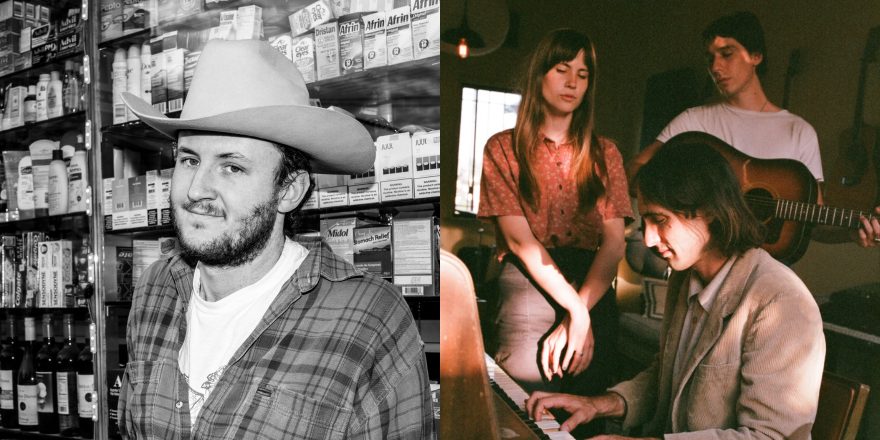Dougie Poole is a singer-songwriter based in LA; Andy Boay is the solo project of Andy White, one-half of the band Tonstartssbandht. Both have new records — Andy’s You Took That Walk For The Two Of Us came out last week, and Dougie’s live record At Tubby’s is out today on Wharf Cat — so to celebrate, the two got on a call to catch up about live recording, their favorite live records, and more.
— Annie Fell, Editor-in-chief, Talkhouse Music
Dougie Poole: We recorded [my new record] at Tubby’s, the legendary upstate New York venue. We recorded it in, I think, September 2024.
Andy Boay: Nice.
Dougie: It was a small run of shows, and I think in the back of my mind as we were getting tighter and the shows were getting better, I was thinking about the tour that we’d done the previous year in Europe together, in which you meticulously recorded every single show that we played from the board. And I was like, “Oh, that’s really easy.” So the morning of the Tubby’s show, I brought my computer to the show, which is not something that I otherwise usually do, and we stopped by Guitar Center and picked up a zoom recorder on the Guitar Center buy-and-return program.
Andy: [Laughs.] The generous program that Guitar Center explicitly lays out for touring musicians.
Dougie: [Laughs.] We just went up and we recorded it. It’s a 100 person room over there, and the show sold out. We’d played at TV Eye the night before, and it was a good gig, so I was feeling good. So that morning, we just decided to record it. We played the show, and immediately after, the very awesome sound guy, Nick, came up to me like, “That was a great show!” I was feeling really good about it. Mike [Etten] and James [Wyatt Woodall] were feeling really good about it. And then Nick, who was running the board, said, “When I shut down your board, your computer shut down, and all the files are gone.”
Andy: Ah! How did that feel, in that moment when you were told that?
Dougie: You know, I was disappointed. I was just kind of like, “OK, we’ll record it the next night.” There’s an episode of Six Feet Under in which some Tibetan monks build a sand mandala — are you familiar with this concept?
Andy: It’s like patterns in the sand. Is that correct?
Dougie: Yeah, it’s like a really intricate, colored sand mandala that they build with tweezers. That level of specificity. And then as soon as it’s done, they just pour it out. I was miffed, but then it was like, Most of the other shows I’ve played, it’s not recorded and it’s just sort of disappeared, and that’s fine.
Andy: So, somehow we get from that to you putting out a live record from that show. How does that happen?
Dougie: Ableton, which is the DAW that I used to record it from the board, has all kinds of file backup things. The first layer of backup did not work. It was not returning the file. But then, if you go on the internet and you dig around, there’s some files a bit deeper. I opened the terminal and started looking around deeper in the computer and, yeah, obviously it was in there.
Andy: That’s so sick. I can picture you saying to yourself out loud, “Oh, fuck yeah,” when you found the files.
Dougie: Yeah, I was excited. I texted James and Mike. Also Cory [Plump], who runs Tubby’s — he felt really, really bad that had happened, and I texted him in the middle of the night. And then I just slowly went about the process of mixing it down through my tape machine.
Andy: How many stems did you have from the board?
Dougie: Let’s see… My guitar, Mike’s guitar, James’s steel guitar, my vocal, Mike’s vocal, and then the stereo tracks on the zoom recorder. So it was seven.
Andy: And did you set up the zoom recorder back by the front of house, the board?
Dougie: Yes. My friend and former bandmate Tristan Sheperd is an AV guy, and he brought a tripod for me — which is something that I forgot to get. So we had it up on a tripod over the crowd. Have you ever recorded a show there?
Andy: One of the times Tonstartssbandht played at Tubby’s, I had my touring recording kit with me. And there is a gentleman whose name, of course, escapes me right now — he’s really nice, he lives in the tristate area, and he’s a real taper. He rolled up, and I remember him being like, “I’m stoked for your Tubby’s show. Are you guys going to be recording it?” And I was like, “Fuck yeah, dude. I record all our shows.” And he said, “Cool, I’ll be recording it too.” And then as soon as the show was over, he was like, “Can you send me your stems? And I’ll make a super recording of them.” Which, I don’t know the utility of combining so many different angles and redundant microphones — he has his own room mics, nice ones that he brings to gigs — but we sent it to him and he mashed it together and it sounded cool.
Dougie: Cool.
Andy: I feel like there are certain venues that really invite that kind of culture and are super happy to work with, you know, polite spectators who want to record. And Tubby’s is certainly one of them. I think they’re very accommodating.
Dougie: Totally. I feel like we’ve talked about this, because I was texting you the morning of that show to get your take on the zoom recorder and how to do this. And I think that maybe since you did that, Tubby’s has actually installed what I understand to be two very nice microphones in the ceiling of the room. Which, I didn’t end up using just because I feel like there was somebody “woo”-ing right under them, and I like my zoom recording a little bit better.
Andy: [Laughs.] That’s such a thing with putting the room mic back by the board, because depending on the volume of the room, the dynamics of the music, and then the attitude of the crowd that evening, you might have a lot of crosstalk. Even when people are being polite and they’re like, “I’m not going to carry on a conversation right at the edge of the stage, I’ll go to the back of the room if I need to catch up with a friend in the live room” — that’s right where the room mic is. So then you listen back to your gig and it’s two people being like, “Dude, I got so fucked up yesterday, it was awesome. Anyways, how have you been?”
Dougie: [Laughs.] Yeah. Tubby’s is a small room, so it’s not like Frampton Comes Alive!, where the crowd is large enough that every individual voice sort of blends into a din. You can hear someone’s ice clinking around in their glass. Which is cool. I think what I mostly ended up doing is, the way that I mixed it, was I’d bring down the room a lot and I use the digital reverb on all the tracks. And then in between, for the effect of having a crowd in a room there, I would bring the room back up in between the songs, to have the effect of that without somebody’s breathing next to the mic or coughing.
Andy: Totally.
Dougie: Tell me about your record. I’ve obviously listened to it many times already…
Andy: I would be happy to tell you about it. This record is my first Andy Boay new, quote-unquote, “studio release” since 2013.
Dougie: And the 2013 release was In The Light.
Andy: Yes, In The Light was an album that I put together very quickly before I went on a month long tour opening for the Florida pop rock band Surfer Blood. I just self-released this tape album to sell on that tour. And then suddenly 12 years went by and I didn’t put out anything new. But my normal band that I’ve given most of my time to in the last 20 years is on a nice, well-needed break at the moment. So the last 18 months, I’ve just been pouring all my creative energy and my free time into working on new solo stuff. I started playing out again, which was really fun. My first show in forever was in Montreal two years ago. My friends in the band Gong Gong Gong invited me to come up and play a show with them, which was very special. It was a nice way to sort of re-enter the live scene. I recorded that show off the board with the help of the lovely people at La Sala Rossa in Montreal, and I put that out immediately because I had all this new material that I wanted to get out and have something to sell at shows. I put that out as a tape, but I wanted to further develop and polish up the material, so I ended up carefully arranging and tracking all that stuff to my Yamaha MT8X eight-track cassette recorder at my little studio in the East Village. I bounced all the stems from the cassette to my DAW, and then brought the stems to Joe Santarpia and Roberto Pagano in San Francisco at the Idiot Room. They mixed it with me last year, and I am releasing it with my brother on our personal label.
Dougie: Why did I think that you recorded it on the 688?
Andy: Because I have been recording mostly on the 688. But last January, I didn’t have my 688 in New York. It was still in Orlando. I brought back up to New York maybe a few months after I recorded this record.
Dougie: So this is all on the Yamaha?
Andy: Yeah, they’re on the MT8X. And the MT8X is much more limited than the 688. But if you’re a solo musician tracking one-by-one in the studio and, like me, you’re hitting your mixer before you even go to the tape machine, it’s functionally the same. You build it up track-by-track. The MT8X can only do four tracks at a time, the 688 can do eight at a time. But again, I as a solo musician tracking by myself, I rarely am recording more than three or four tracks at a time, absolutely maximum.
Dougie: Did you do any bouncing down on the tape machine to stereo?
Andy: Yes, some of it was stereo, but I did a lot of doubling, whether it was doubling vocals or doubling the guitars. Because a few of these songs on the record, like you probably know, they were originally built on live looping — so looping a guitar part, singing over it, soloing over it, and then sort of reversing it or moving into a new part of the song. But when I tracked the record, I didn’t want to use the looper. I wanted to play everything out, phrase by phrase by phrase by phrase. I also wanted to double it like I do when I loop it, but I didn’t want that to eat into my track count, limited to eight. So I would lay down those parts first and then bounce them to mono tracks so that the doubled guitar is one mono channel.
Dougie: Oh, interesting. That’s a cool effect. I feel like whenever I’m doubling something, I usually just assume that it has to be in stereo. But that’s not true.
Andy: No, it’s not true at all. I mean, shit, man, you don’t even have to do it as a doubling effect either. You can record fucking four, five, six different instruments — drums, bass, guitar, vocals, whatever — and then ping-pong all of those down to one channel if you really want to. And that can sound really cool. It has a very particular sound to it. You know, you have to be at peace with the squashed nature of it. But it can sound really cool. And then you’ve got seven other tracks left, which is cool.
Dougie: Yeah, man, I’m at peace with the squashed nature.
Andy: You picked up the 388 a couple of years ago, right?
Dougie: Yeah.
Andy: And how have you found incorporating that into your practice? You’ve been pretty active with music since you were probably a teenager, right?
Dougie: Yeah.
Andy: And did you have much experience at all with tape machines or tracking in that manner before you got there?
Dougie: Not in any serious multitracking sense. At some point I have — I think probably inspired by you and our friend Sean Malone when I was in college — picked up a portastudio and tried it out. But for what I was doing, it made so much more sense to just be on a computer. I just found it to be a lot easier. But I spent a lot of the pandemic working at a computer, and my writing practice and my recording practice had been a lot of what you were talking about, overdubbing alone, but to a computer. And I think during this period where I was working at a computer all the time, I just couldn’t really bear to work all day at a computer and then sit down to try to do my creative work at a computer, too.
Andy: I fully relate to that, man.
Dougie: It took me a long time to figure that out. The last studio record I did, instead of doing it that way, I found a bunch of really good musicians and was like, “Here’s some demos I have, let’s turn this into something. But I really relish the arranging part of everything and the dialing in of the sound, and I wanted to see if I could do that without going on a computer. And the 388 definitely has a sound. People sort of covet the squashed sound of it, but it sounds pretty hi-fi to me. And a few of the recording engineers I look up to — like my friend Katie [Von Schleicher] and this guy Phil Weinrobe who I worked with — I think they’re referring more to 16- or 32-track tape, but they’re like, “Working with tape now is much more about workflow than it is about the actual sound of things.”
Andy: Absolutely.
Dougie: There’s really nice tape machines where the fidelity is really, really high, that are the product of decades of engineers trying to eliminate the sound of tape. So they sound really good. It’s more about just slowing down, getting off the computer, not being able to comp 100 different takes into the perfect take. Just coming to accept the imperfections and all that.
Andy: There’s a lot to be said about the fact that the technology is old, and limited to some extent, at least with the portastudio stuff. But I feel like a lot of the sound that people describe — or imagine when they describe, like, “lo-fi” — is less to do with the medium analog tape than it is to do with the fact that, in the ‘80s and ‘90s, like Ween records or something, guys that were weirdos with portastudios in their basement, they were also recording with really shitty gear.
Dougie: Yeah, totally.
Andy: Like, garbage microphones, RadioShack shit. The stuff that when we started using four-tracks when we were teenagers, we were using too. But if you’re a musician who’s been playing for a long time, and you’re guys in your 30s like us — I’m not saying we have high-end, top of the line gear, but over time you may become a little more thoughtful about, “Well, I don’t have to use the absolute worst quarter-inch RadioShack microphone, because that’s all I have that’s available to me.” I’ve been around a while. I have a few microphones that I like now.
Dougie: You know how to use them.
Andy: Yeah. And also, you understand gain staging. Of course, you can use that to your advantage, or take it in any direction that you want. But to your point, it is more about the workflow for me these days than it is about, like, “Just push the needle into the red and make it sound like a P.S.F. record,” or something. Which is cool and I love. But at the end of the day, when I go into my studio and I’m really excited to work and get off my computer, it’s because I love digging into the routing matrix of the 688, and I like having to be thoughtful and committing to takes and mixing them down to one track. It’s so refreshing, and it’s very rewarding, and relying on the mechanics of the tape — like, the fucking reel turning — when I play it back, it’s like, “This is something that’s moving in front of me and I’m hearing it come off the tape head.”
Dougie: Yeah, it’s really rewarding. Also, I feel like it’s done a lot for me in terms of learning the things that I want to play. My first couple records where I recorded them, again, comped from a thousand takes and overdubbed a million times — once I recorded those records, I had to go back and learn how to play them. But it’s so nice to dig into the process of just rehearsing your parts. It makes you practice more.
Andy: Totally. That’s interesting when you bring up comping and stuff, when you’re working in a DAW, with the tape machines — at least the ones that I use — they have a punch-in feature which can be useful, especially for a vocal take, if there’s enough silence between the end of one phrase and the beginning of another. If there’s a sour note that I really want to fix, I might try and punch-in. But it’s not seamless, and you can erase something very easily that you wanted to keep.
Dougie: I’ve definitely just completely fucked up an otherwise perfect bass take by trying to add a slide in, or something stupid like that.
Andy: It’s great to have those experiences, too, working with tape, because it reminds you of having to commit to takes, and also the fact that when it’s gone, it’s gone. There’s no backup folder that you can dig into on your tape machine, because it’s like, “Yo, the ferrous on that tape has been rearranged forever. You will never hear that again.”
Dougie: Yeah, that’s pretty cool.
Andy: What’s your favorite live record?
Dougie: I really like Townes Van Zandt’s Live at the Old Quarter. You know that one? It’s him at a small bar playing solo acoustic guitar and singing, which I like a lot.
Andy: I’ll have to check it out. I have never listened to Townes Van Zandt, but I do see men in t-shirts that say, “Listen to Townes Van Zandt” quite often.
Dougie: [Laughs.] Yeah, those are around for sure.
Andy: So I guess I’ll take their word for it and one of these days and pop one of his records on.
Dougie: What’s your favorite live record?
Andy: Probably High Rise Live, dude.
Dougie: I don’t know if I’ve ever heard that.
Andy: It’s cool. I mean, they’re the kind of band that, for the most part, just tracked everything live anyways in the studio. So the live record has the energy and a little more room sound of like, “Oh, they’re playing in a bar somewhere in Japan.” But it just sounds like one of their studio records too, which is to say, fucking great. Did you ever like Kick Out the Jams by MC5?
Dougie: Is that a live record?
Andy: Dude, this is why it’s so interesting to me — yeah, it is a live record. Some people like that band, some people don’t; I think they’re pretty fucking cool. But when I first discovered it, I was probably a teenager, and what I loved about it is, that was their debut album and it wasn’t like, “Here’s a recording of us on tour playing live versions of material that you already know from the studio.” It was everyone’s first introduction to all those songs, and their renditions of them was from a concert.
Dougie: That’s cool. That’s really inspiring to me. On this live record I’m putting out, there’s one previously unreleased track. And as we were getting ready to do this small amount of press for it, the question was broached: “This is a good song. Do you want to release this live version before you put out a studio version?” And for a moment, I was like, Oh, shit. And then I was thinking about the tape that you released before this upcoming record, and it’s just like, Who gives a fuck?
Andy: Yeah, exactly.
Dougie: It just reminded me that there’s no such thing as a definitive version of a song, they exist outside of recordings. They can evolve, and I’m not going to not release it because it hasn’t been recorded in a professional studio yet.
Andy: And when you do that, it’s going to sound quite different. And different people will like different parts of the different versions of it.
Dougie: Totally.
Andy: No one’s going to forget that the original version was recorded in front of a live audience at Tubby’s. That’s intrinsic to the version that you’re releasing.
Dougie: Right. This other live record that I was thinking of is called 801 Live by Phil Manzanera, who I believe was in Roxy Music, and I believe Brian Eno plays on this live record as well. It’s really cool. I don’t know a ton about it, but it sort of inspired one aspect of this live record, insofar as there are some parts of it, like reverse guitar and vocal doubling, where it’s like, “Oh, this is a live recording that has been mixed in such a way that betrays that a little bit.” In a way that doesn’t necessarily hold as precious the fact that it’s a live recording, and doesn’t seek to make it give you the experience of, “Oh, man, what would it be like if I was at that show?” It’s taking something that was recorded live and making something completely new out of it.
Andy: Totally. I mean, that starts with the board recording, because when you’re getting dedicated outs from the board for your live record — and you could look to the Dead for that as well, with all those matrices and board and room mic combos. The live record already sounds different than what anyone in the room would have heard, because they’re necessarily hearing it through a PA system, and then moving through the air. And then people listening to the live record are going to be listening to it through their home stereo or with headphones on, and they have dedicated rips from the board. So the idea that it’s a perfect field recording or a documentary of the concert — it’s going to sound different even from the get-go. Even if you just used a room mic and someone listens to the room mic, they’re hearing so much of the sound of the room that when you’re inside the room, you’re not hearing it in the same way. And the idea of taking it and doubling a vocal or something like that… On some of the live albums that Eddie and I would release for Tonstartssbandht, sometimes I’d go back and be like, “Man, this is a great version of ‘Susie’ from the gig in Vilnius. I just wish my vocals were a little less dry. I know what I’ll do — I’ll put a little echo on my vocal.” And then the live record becomes not exactly what the people in the room heard, but it sounds exactly like what I want other people to take from the show.
Dougie: Totally. So, yeah, I think this Phil Manzanera record made me really inspired me to lean into that as a device. On this record, I dubbed the crowd noise to make it echo and added effects that weren’t there in the first place. I’m really happy with how it came out. It does feel completely different than what anyone heard at the live show, and that’s exciting to me.

